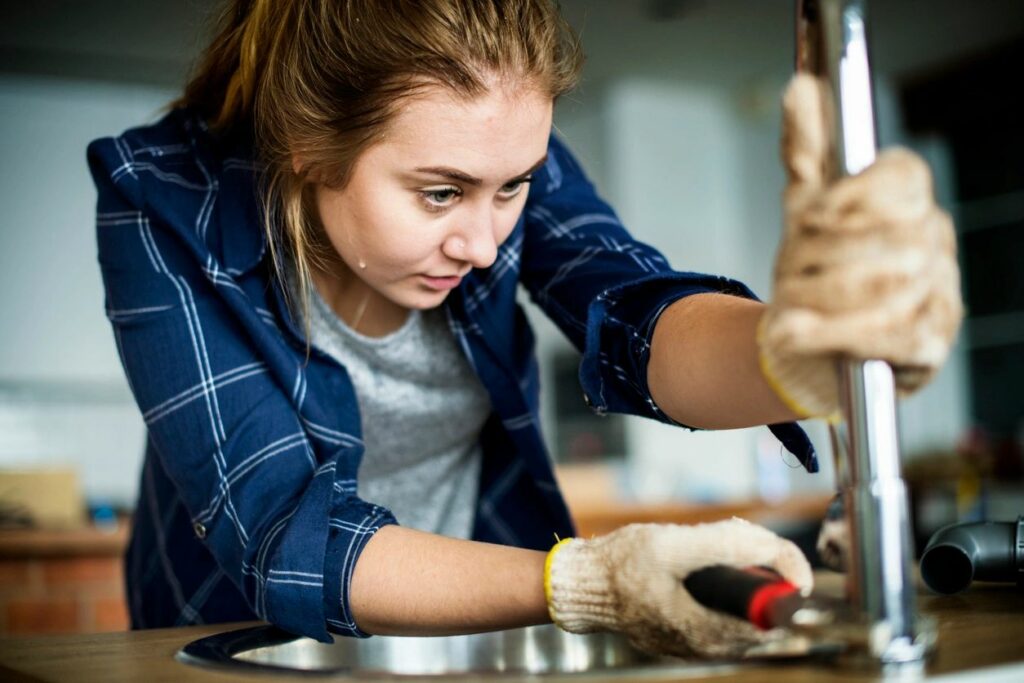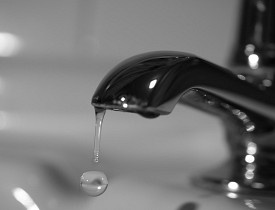Are you on the lookout for details around How to Fix a Dripping or Leaky Faucet ?

Dripping faucets may feel like a minor aggravation, but their effect goes beyond just the annoyance of the audio. From drainage to sustaining unneeded economic costs and health and wellness risks, disregarding a leaking tap can bring about numerous effects. In this article, we'll explore why it's critical to resolve this usual family issue without delay and efficiently.
Wastage of Water
Ecological Impact
Leaking taps contribute significantly to water wastage. According to the Environmental Protection Agency (EPA), a single faucet dripping at one drip per secondly can throw away more than 3,000 gallons of water annually. This not just strains water resources but additionally influences ecological communities and wildlife depending on them.
Financial Costs
Boosted Water Bills
Beyond the environmental influence, trickling taps can blow up water expenses considerably. The collected wastefulness with time equates right into higher utility costs, which might have been prevented with timely fixings.
Possible Residential Or Commercial Property Damages
Furthermore, extended leaking can lead to harm to components and surfaces surrounding the faucet. Water buildup can create discoloration, corrosion, and even structural problems if left unattended, resulting in additional repair costs.
Health Concerns
Mold and Mold Development
The continuous visibility of dampness from a dripping faucet develops a suitable atmosphere for mold and mildew and mildew growth. These fungis not just compromise interior air quality yet additionally position health threats, particularly for people with respiratory system problems or allergies.
Waterborne Illness
Stationary water in leaking faucets can become a breeding place for bacteria and other pathogens, enhancing the threat of waterborne diseases. Contaminants such as Legionella bacteria flourish in stagnant water, potentially causing major illnesses when ingested or inhaled.
Do it yourself vs. Expert Fixing
Pros and Cons of DIY Repair
While some might attempt to fix a trickling tap themselves, do it yourself repair services feature their own set of obstacles. Without correct expertise and devices, DIY attempts can aggravate the problem or result in insufficient repairs, prolonging the trouble.
Benefits of Employing a Specialist Plumber
Hiring a professional plumber makes certain that the underlying root cause of the leaking tap is addressed effectively. Plumbing professionals possess the experience and tools to identify and repair tap problems efficiently, conserving time and lessening the danger of more damage.
Step-by-Step Guide to Taking Care Of a Dripping Faucet
Tools Needed
Prior to attempting to repair a trickling tap, gather the needed devices, including an adjustable wrench, screwdrivers, substitute components (such as washers or cartridges), and plumber's tape.
Common Faucet Issues and Their Solutions
Determine the kind of faucet and the specific problem creating the drip. Usual problems include damaged washing machines, rusty shutoff seats, or damaged O-rings. Describe maker guidelines or on the internet tutorials for detailed guidance on repairs.
Safety nets
Routine Maintenance Tips
To stop dripping taps, perform routine upkeep such as cleaning aerators, checking for leakages, and replacing damaged parts immediately. Additionally, take into consideration mounting water-saving tools or upgrading to extra effective fixtures.
Significance of Prompt Repairs
Attending to leaking taps as quickly as they're noticed prevents more water wastefulness and prospective damage, eventually conserving both water and cash in the future.
Influence On Residential Property Worth
Assumption of Well-Maintained Residential Property
Keeping a home in good condition, consisting of attending to upkeep issues like trickling taps, enhances its perceived value and charm amongst possible customers or occupants.
Influence on Resale Value
Properties with well-maintained plumbing components, consisting of faucets, command greater resale values in the realty market. Attending to leaking taps can add to a favorable impact throughout home assessments and settlements.
Ecological Responsibility
Individual Contribution to Conservation
Taking responsibility for taking care of trickling taps aligns with broader initiatives toward water preservation and environmental sustainability. Every person's activities collectively make a substantial influence on maintaining priceless sources.
Lasting Living Practices
By focusing on punctual repair work and taking on water-saving behaviors, individuals contribute to lasting living practices that profit both present and future generations.
Final thought
Attending to a dripping faucet surpasses plain benefit; it's a crucial action toward preserving water, reducing economic prices, and securing health and wellness and residential property. Whether via do it yourself repair work or expert aid, acting to take care of dripping faucets is a tiny yet impactful method to advertise responsible stewardship of resources and add to a much healthier, more sustainable future.
How to Fix a Leaky Faucet: Step-by-Step Repair Guide
A leaky faucet may seem like a simple annoyance, but if it's not fixed promptly, that leak could cost hundreds to potentially thousands. From water damage to mold, mildew, and high water bills, even a tiny leak can be catastrophic if left unattended. Damage like this can even affect the overall value of your home, so it's important to take the right approach for leaky faucet repair. You may need the help of a plumber in some cases, but we've got a few tips you can try on how to fix a leaky faucet before calling the pros.
Four Faucet Types
When you're learning how to fix a leaky faucet, the first step is knowing what kind of faucet you're working with! There are four common types.
Cartridge Faucets
Cartridge faucets come in one- or two-handled varieties. In one-handled cartridge faucets, hot and cold water combines in a single cartridge. In the two-handled versions, hot and cold water are controlled separately and mixed in the faucet.
Ball Faucets
Ball faucets have a single lever you push up and down to adjust the pressure and rotate to change the temperature. A slotted metal ball controls the amount of water allowed into the spout.
Compression Washer Faucets
They're the oldest type of faucet, but they're still used in many homes — especially older ones. Compression faucets have two separate handles that, when turned, raise or lower the washer that seals a water valve. This valve stops water from flowing through the faucet when it is turned off.
Disc Faucets
Disc faucets rarely need to be repaired due to their maintenance-free design. The water flow is controlled by two discs — the upper one raises and lowers against a fixed lower disc, creating a watertight seal. If your disc faucet starts leaking, you may need to replace the seals or clean residue buildup from the inlets.
Fixing a Leaky Faucet
Step 1: Turn Off the Water
Whether you're learning how to fix a leaky bathtub faucet or how to fix a leaky kitchen faucet, always turn off the water supply to your working area when you're fixing a leak. The last thing you want is a flood added to your list of things to fix.
Look for the shutoff valves below your sink or around the tub and turn them clockwise to stop the water flow. If your faucet doesn't have shutoff valves, you may need to turn off the water for the whole house. Check to make sure it's off by turning the faucet on. If nothing comes out, you're ready to start the repair.
Step 2: Take Apart the Faucet
How you disassemble your faucet depends on the type of fixture you have. You can use a flathead screwdriver to remove the caps on top of the handle or handles for cartridge and compression faucets. Inside, you should see handle screws. Unscrew these with a screwdriver to remove the handle.
Disc- and ball-style faucets will typically have an inlet screw near the handle, and removing that will reveal the interior of the faucet.
Detach the Valve Stem
For cartridge- and compression-style faucets, you'll see the inner valve stem or cartridge once you remove the faucet handles. If you have a compression faucet, unscrew the brass valve stem. If you have a cartridge faucet, pull out the cartridge. If your cartridge has been in place for a while, it may require some tools or extra force to remove it due to mineral deposits.
Examine and Replace Parts
Once you've removed the parts, check them out to confirm what needs to be replaced. You may see corroded rubber washers, O-rings, stems, or cartridges. On a ball-style faucet, check the seats and springs for damage.
If you need to repair a leaky disc faucet, check the inlet and seals on the lower disc.
Once you determine what parts must be replaced, visit your local hardware store. Bring the damaged parts with you to ensure you can purchase the correct components to replace them.
Clean Valves and Faucet Cavity
If you've removed a stem or cartridge, you may notice mineral buildup in the faucet's threads. Use white vinegar to clean the valve seat by soaking it for a few minutes, then scrub it away with a soft toothbrush and rinse with warm water. You can also clean the interior of the faucet in the same way.
Reassemble the Faucet
Once your faucet is cleaned and the required parts have been replaced, it's time to reassemble it. Put the pieces back together and slowly turn the water supply back on. Doing this slowly is crucial because too much initial water pressure can damage the new hardware you've just installed.
https://homewarranty.firstam.com/blog/how-to-fix-leaky-faucet

As a devoted person who reads on Water Dripping from Faucet: Why and How to Fix, I imagined sharing that section was a good idea. Liked our write-up? Please quickly share it. Help other people discover it. Thanks for going through it.